Introduction: A Non-Coder’s Dream
Let me start by saying this—I have almost zero background in coding. The most I’ve done is tweak some settings here and there on my website. But when I had this grand idea of creating a personalized cocktail recommendation system, I thought, Why not try?
The concept was simple in my head:
- I already had a Google Sheet loaded with data and formulas that could calculate a cocktail recommendation based on user preferences.
- I wanted users to input their preferences on my website using sliders.
- The results would pull from my Google Sheet and display the perfect cocktail recommendation.
Sounds great, right? But for someone with little technical knowledge, this felt like climbing a mountain barefoot.
That’s when I turned to AI. What followed was an incredible journey where AI guided me step-by-step, helping me set everything up in just one hour. Yes, one hour!
Check It Out for Yourself
Before I dive into the details, I’d love for you to take a look at the Tool that came out of this experience (Click here -> Drink Recommendation Tool ). It’s simple, fun, and might just help you discover your next favorite cocktail. Play around with the sliders and see what drink matches your taste!
Now, let me tell you how it all came together.
The Golden 4 Steps: Harnessing AI to Build a Quality Web Solution Without Coding Expertise
Here’s how I turned a simple idea into a fully functional, web-based cocktail recommendation system in just four steps, with AI:
Step 1: Design a Simple Formula-Based Solution
The first step was laying the groundwork. I started with what I knew—a Google Sheet.
I created a simple, formula-based system to calculate cocktail recommendations. Users' preferences (sweetness, sourness, bitterness, etc.) would act as inputs, and based on weighted calculations, the sheet would output the perfect cocktail.
This step was all about organizing the data and figuring out the logic behind the recommendations.
Step 2: Tell AI My Big Idea
When I first described my idea to AI, I wasn’t sure what to expect. Would it understand me? Would it give me solutions I could actually use?
Here’s the high level workflow of the idea I shared with AI:
User Inputs Preferences (via sliders) → Data Sent to Google Sheet → Google Sheet Processes & Calculates → Recommendation Displayed on Website
This workflow is based on the Input-Process-Output framework, which is commonly used in design thinking. I adapted it specifically for AI prompt design and named it the AI Prompt Design Framework (APDF):
To my surprise, AI not only understood my vision but also broke it down into a clear, actionable plan. It told me I could:
- Use my Google Sheet as the "brain" of the system.
- Create a simple web-based interface for users to input their preferences.
- Connect the two using tools I’d never even heard of before—like Google Apps Script.
What I appreciated most was how approachable AI made it. It didn’t make me feel like I was tackling something impossible. Instead, it gave me confidence by explaining things in plain, simple language.
Step 3: Concurrently Learning and Creating
This was the most exciting part of the process. As AI guided me step-by-step, I was learning and creating at the same time.
For example:
- AI taught me how to write a Google Apps Script to pull data from my Google Sheet.
- It showed me how to build a simple HTML interface where users could interact with sliders.
- It even helped troubleshoot issues, like dealing with Google’s "unverified app" warning, which initially felt overwhelming.
Each small victory gave me confidence, and the process didn’t feel intimidating—it felt like solving a fun puzzle.
Step 4: Refining and Winning
Once the system was functional, it was time to test and polish it. While it technically worked, I wanted the tool to deliver a better UX/UI experience—making it more intuitive, visually appealing, and user-friendly. So, after testing the system, I gave AI specific follow-up prompts to refine the design.
Here’s what I asked AI to help with:
-
Improving Layout: I noticed the sliders and labels looked misaligned, so I asked:
“How can I align the sliders and labels better for a cleaner interface?” -
Enhancing User Clarity: The slider labels weren’t self-explanatory, so I prompted:
“Can you help me add tooltips or hints to explain what each slider represents?” -
Styling the Output: The recommendation text felt plain, so I asked:
“How can I make the cocktail recommendation stand out visually?”
This process of testing, identifying improvements, and iterating with AI continued until I was happy with the outcome.
The Result: A Working & Free System in Just One Hour
By the end of the hour, I had a fully functional and polished cocktail recommendation system live on my website.
The best part? I didn’t need to touch any complicated backend systems. My Google Sheet remained the heart of the tool, meaning I could easily update data or tweak formulas anytime without breaking a thing.
And here’s the kicker—it was all completely free! I didn’t need to spend a single penny on expensive tools, plugins, or servers. Everything was built using free, accessible tools like Google Sheets and Google Apps Script.
Final Thoughts: Empowered by AI
If someone had told me a week ago that I’d build a cocktail recommendation system in just one hour, I would’ve laughed. But now, I know what’s possible.
With AI as a guide, I took an idea that seemed out of reach and turned it into something real. It wasn’t just about the tool I created—it was about proving to myself that I could learn, adapt, and succeed, even in areas I thought were beyond me!

